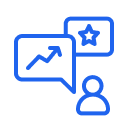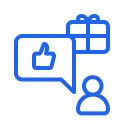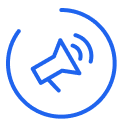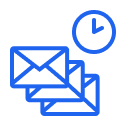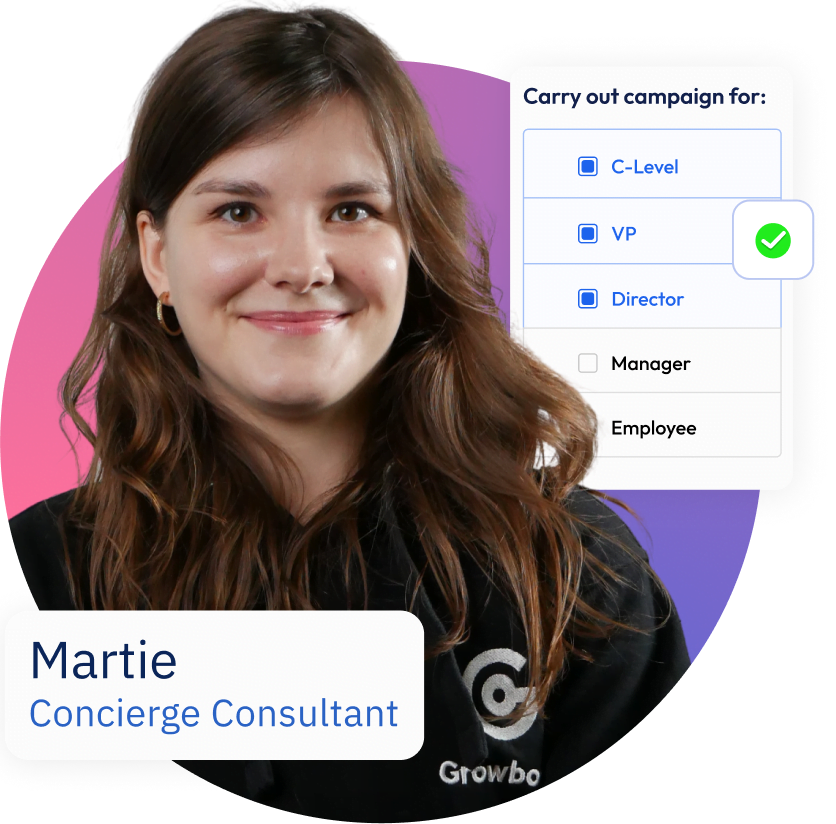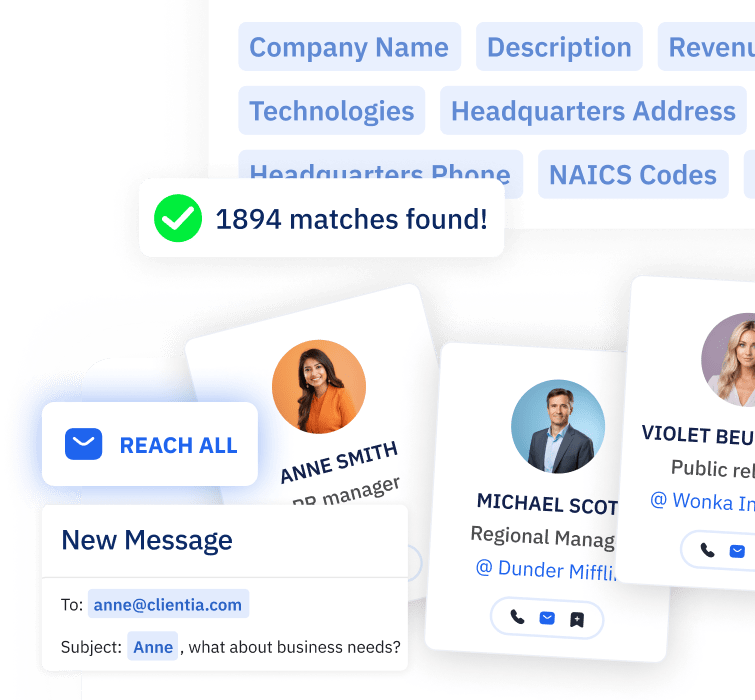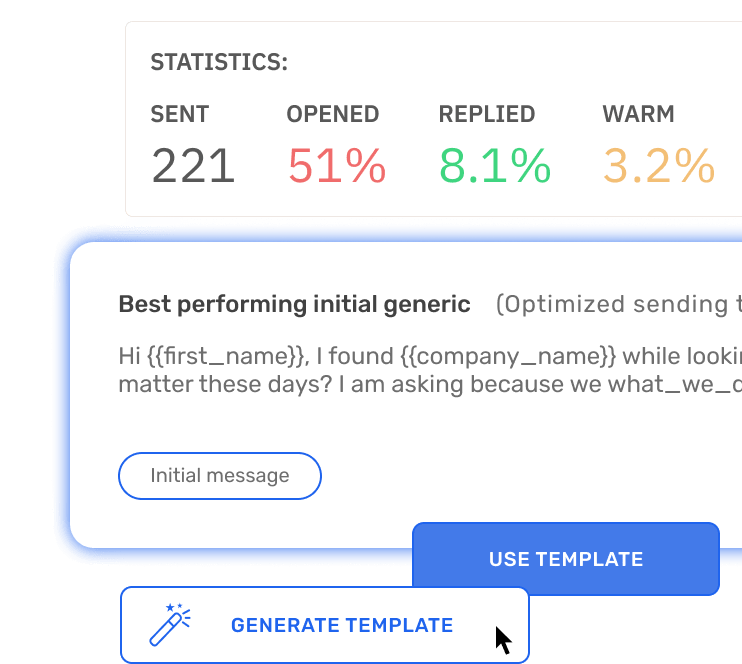Sales is all about building relations, getting to know your customers, and looking for product-market fit to capitalize on your strategy – but, in the end, all that actually matters is closing more deals.
This brief guide will show you how you can approach outbound sales and improve your sales pipeline.
What is Outbound Sales?
In short, outbound sales is a type of proactive selling where you reach out to potential leads, rather than wait for them to come to you.
The goal of outbound sales is to find, connect and nurture people who might need your product or service – usually, this involves some form of cold calling or sequence emailing, or other types of outbound prospecting done by you or your sales team.
Benefits of Outbound Sales

#1 increasing your customer base and grow your business
With outbound sales, you don’t just wait for others to pay attention to you – you go out and get their attention.
This means potentially more business and more customers for you and your company.
#2 a more effective way to sell
Outbound sales tactics help you target specific demographics with laser precision as compared to other types of selling, which are often more of a “spray and pray” method.
As a result, you are not just wasting time reaching out to people who will never need or want what you’re selling – you’re only contacting those who are, or are highly likely to be, actually interested.
#3 better for business forecasting
Let’s say that your business is selling a new type of accounting service to small businesses.
With outbound sales, you can target your ideal customer – in this case, the business owner or decision-maker who may be interested in trying out this new service.
This makes it easier to forecast and plan your sales pipeline. Creating a list of targeted leads, or those who previously demonstrated demand for your services can help you generate leads (and generate revenue, naturally).
#4 building relationships with potential customers from day one
You start with a clean slate when you reach out to a potential customer – there’s no prior history, and you’re not starting at a disadvantage.
This allows you to build a relationship with them from the ground up, rather than having to try and make amends for past mistakes. It also allows you to get an insight into their business, what they’re looking for, and how you can best serve them – all before you’ve even made a sale.
It goes without saying that it can massively impact your business growth.
Seek, pick, and reach
Connect with your potential customers
- 180m+ contacts
- Advanced filtering
- Multichannel sequences
- CRM integrations
Inbound and outbound sales: the difference between outbound sales and inbound sales
You may hear the terms “inbound” and “outbound” sales thrown around a lot, and where is the difference between outbound and inbound sales? Well, it’s simple, really.
Inbound sales is when customers come to you – for example, they see an advert for your product and then reach out to you themselves. Outbound sales, as we’ve already established, is when you go out and get customers yourself.
With inbound techniques, the customer does most of the work – they find you, they research you, and then these inbound leads decide whether or not to buy from you. With outbound selling, it’s the complete opposite – you do most of the work to find and connect with potential customers.
In inbound sales, or inbound marketing, it’s in prospects’ control – it’s inbound leads that dictate the terms, the timeline, and the speed of inbound sales. With outbound selling, you’re in control – you dictate the terms, the timeline, and the speed of the sale.
In inbound sales, customers will often already have some level of interest in what you’re selling before they even talk to you. With outbound sales, customers may not have any interest in what you’re selling – yet.
It’s your job to ignite the interest.
Remember that inbound and outbound sales are not mutually exclusive – the best salespeople will use a combination of both in order to close more deals and improve lead generation.
So, it’s not about choosing inbound vs outbound sales – it’s about removing “vs” from inbound vs outbound sales, and making both inbound marketing and outbound methods work together.
Outbound Sales Strategies: Step by Step
#1 Define who your perfect lead is
If you had a magic wand and could wave it to create your “perfect lead”, who would that be?
To answer this, you need first to consider what product or service you’re selling – and how it reflects what they would be looking for.
What industry are they in? What job title do they hold? What company size are they? Where are they located?
Once you’ve answered these questions, you’ll have a much clearer idea of who your target customer is.
From here, you can start to create buyer personas – these are fictional representations of your ideal customers, based on market research and real data about your existing customers.
Creating buyer personas will help you to focus your outbound sales efforts, and ensure that you’re targeting the right people.
#2 Map the buyer’s journey and touchpoints
You know who your target customer is, but what’s the best way to reach them?
Understanding the buyer’s journey is crucial for outbound sales process, as it will help you or your sales team to map out the best way to reach and engage with potential customers.
The buyer’s journey is the process that your target customer goes through when they’re considering a purchase – from awareness of their problem, all the way through to making a decision and becoming a loyal customer.
Each stage has its own set of touchpoints – these are the interactions that a potential customer has with your brand, at each stage of their journey.
Examples of touchpoints
- Outbound sales campaign ads
- Social media (posts, social selling)
- Emails (direct mail with sales pitch, cold emailing – cold email sequences)
- Website content (content marketing)
- Sales conversations (personal contact)
- Outbound sales calls (cold calling, follow-ups)
We’ll go into detail about some of them a bit further, but you can see how many content marketing formats can be used to help you boost lead generation and make more sales.
Mapping out the buyer’s journey for your product or service is crucial to identify the best touchpoints for your outbound sales strategies and adjusting sales funnel.
It is then possible to determine what type of content or message will be most effective at each stage of the buyer’s journey.
For example, if someone is in the awareness stage, they may not be ready to talk to outbound reps yet.
In this case, it would be more effective to target them with an ad or a social media post – but even here, a cold email, or a cold calling script, can still work really well.
If someone is in the decision stage, they’re much closer to making a purchase. They probably expressed interest and are more likely to convert than cold leads.
In this case, it could be more effective to target them with an email or sales call.
Remember, you don’t have to stick to one type of touchpoint – you or your team can use a combination of different tactics in your sales process.
#3 Time to prospect
It can be intimidating to discuss your product or service with someone who knows nothing about it.
To make things easier, start by creating a script – this is a short, pre-prepared spiel that you can use to introduce your product or service, and explain the value proposition and what it does.
To the point, crystal clear brief scripts are best. It should also be friendly and conversational, to build rapport with the person you’re speaking to.
Ways of prospecting
- Cold calls: Cold calling your potential target audience who is yet to show any likelihood of buying from you.
- Cold emails: Sending a cold email to someone who has not expressed any interest in your product or service.
- Social selling: Selling to people or even your own leads you’re connected to on social media.
Prospecting can be a challenging process, but your job is to persevere. The more people you speak to, the more likely you are to find someone who’s interested in what you have to offer. Outbound sales is about the scale – the more people you contact, the more deals you’re likely to close.
And, even if someone isn’t interested in buying from you right away, they may be willing to give you some valuable (and cost-effective) feedback that you can use to improve your product or service.
leave no lead unexplored
Every potential client within reach
- 180m+ contacts
- CRM integrations
- 23 Prospect filters
- 15 Company filters
#4 Lead qualifying
Not every single person that you speak to is going to be a qualified lead – someone who’s actually interested in buying what you’re selling.
That’s exactly why you need to qualify leads.
Qualifying leads ensure that you’re only spending time trying to sell to people who are actually interested. These high-quality leads are more likely to answer to your highly targeted outreach, and may make it easier for you when it comes to closing deals.
The process of lead qualifying typically involves asking a series of questions – simply for gauging someone’s level of interest.
Examples of lead qualifying questions
- What budget do you have for this project?
- When are you looking to make a purchase?
- What other options are you considering?
- Why are you interested in our product/service?
Asking questions is always a good method to get a conversation started – but in terms of outbound sales process, it also allows you to collect the information that you need to determine whether or not someone is a qualified lead.
#5 Close that sale!
No time to waste in sales cycle.
When you’re ready to close the sale, be direct and to the point – yet still deliver value and real benefit to your potential client.
You should already have a good idea of what the person is looking for based on the information that you gathered during the lead qualifying process.
Now, you need to put together a custom proposal that meets their specific needs.
Once you have your proposal, it’s time to close the sale. Depending on your outbound sales process, this can be done via mail, call, or personal meeting.
A brief checklist for turning a lead into a deal
- Thank the person for their time
- Reiterate the main points of your proposal
- Answer any questions that they may have
- Address any objections and final doubts
- Reassess the value and benefit
Closing a sale can be a nerve-wracking experience, especially if you’re new to outbound sales and lead generation.
However, as long as you’re providing value to the other person or company, you’re good to go here. If you believe in your product or service, then it should be easy to sell it to someone else.
Outbound Sales: Best Practices
#1 Spend time identifying your target audience
It’s no longer enough to just sell to anyone with a pulse. To be successful in outbound sales, you need to focus on selling to people who are actually interested in what you have to offer.
And to be sure you just don’t go for anyone, you’ll need to spend time identifying who you want to sell to.
Quick steps for identifying your new leads
- Creating buyer personas
- Researching your ideal customer
- Figuring out where your target audience hangs out online and offline
- Deepening your knowledge with surveys and interviews
Having even a few more details than before can help you better your cold outreach, cold calling, and create market segments that post more business opportunities for your company.
#2 Train your sales team – if you have one*
To play the game of outbound sales well, you need to act like a well-oiled machine, and that starts with training your sales reps. Each sales rep, or a purely outbound salesperson, should, first of all, understand what an effective outbound sales strategy is, and how it differs from the inbound sales process.
Before they send their first sales pitch, you should make sure that they are:
- Familiar with your product or service inside and out
- Able to articulate the features and benefits in a way that’s relevant to the customer
- Clear on your target market and ideal customer profile
- Armed with a solid script
- Aware of sales goals
- Comfortable making cold calls to make more sales
- Pros at handling objections in lead generation process
- Proficient in using your CRM and other tools like Growbots
- Possessed strong closing skills
While it may seem like a lot, don’t forget that in terms of your outbound sales team, you can always start small and build up from there.
And as they say, practice makes perfect.
For example, encourage your outbound sales team to role-play and to listen to recorded calls (their own and others’) to help them hone their skills. The more prepared they are, the more confident they’ll be when it comes time to make a real call.
#3 Recognize the best channels
Bearing in mind that your target market spends time in different places, it’s important to recognize the best channels for reaching them.
Depending on your product or service, you may find that one channel works better than another. In some industries, cold calling still works great, while in others, it can be difficult to generate leads with phone calls.
The email has proven to be an effective outbound sales tool because:
- It’s relatively easy and cost-effective to set up an email campaign with an outbound sales platform – check our customer stories
- You can reach a large number of new leads with a single email sequence
- You can track metrics to see what’s working and what’s not (e.g. what type of message works best in cold outreach)
- It’s easy to automate and improve email campaigns to generate leads – e.g. with Growbots.
Of course, you don’t have to limit yourself to just one channel. You can (and should) use a combination of channels to reach and generate your quality leads.
For example, you can use email to generate interest and then follow up with a phone call. Or you can use social media to create awareness and then drive traffic to your website or landing page.
Ps. We listed the top 5 reasons why people aren’t buying from you – you can check it out here.
#4 Create effective sales messaging
What you sell is one thing – another is, how you sell it. And in this case, we’re talking about your sales messaging.
Your sales messaging should be 4C: clear, concise, compelling, and customized (to the buyer persona).
In other words, it should be focused on solving the customer’s problem, not on selling them your product. People buy outcomes, not features. If you sell a project management tool, you may want to advertise it as a tool with lots of labels, tags, and formulas – or as a tool that saves 16 working hours for everyone, every single week.
What would be more appealing to you?
Reach More with Less Effort
Connect with Potential Clients at scale
- AI message generator
- E-mail verification
- Multichannel sequences
- A/B testing
#5 Use social proof
People LOVE following the lead of other people, and you can leverage it massively in outbound sales.
If you can show that other people have bought from you and been happy with the results, it will be much easier to close a deal.
That’s why user reviews and testimonials are so important. They give you social proof that you can use in your outbound sales campaigns.
Make sure to include them in your email templates, on your website and landing pages, and even on social media. And if you have any recognizable customers, don’t be afraid to name drop.
Obviously, social proof doesn’t just have to come from customers. You can also use it from employees, industry experts, and even celebrities (if you’re lucky enough to have them as customers).
If you can show that other people trust you, your prospects will be much more likely to do the same.
#6 Work on follow-ups
One of the main mistakes salespeople make is not following up with their leads. Just because someone doesn’t buy from you right away doesn’t mean they’re not interested.
People are busy. They get distracted. They forget – even if the previous call was long, to the point, and just a few days ago.
You should have a solid follow-up plan in place. You need to reach out to your clients who may have gone cold – multiple times.
The general rule of thumb is to follow up at least five times. But in some cases, it may take ten or even more reps call attempts before you finally get a response.
Naturally, you don’t want to be too pushy in your outbound sales process. That’s a surefire way (and classic example, too) to turn off even your qualified leads. But you also don’t want to give up too easily.
The key is to find the right balance – and to have a follow-up plan that you can follow.
#7 Personalize your outreach
Don’t just send generic emails to your entire list of leads.
Take the time to segment your list and then craft custom messages for each group. Or, take it even further with personalization by adding the person’s name, company, or even a specific pain point they’re struggling with. You’re very often given a lot of contact data, but you may not make the most of wrapping them up in your sales strategy.
When you’re just starting out, it may seem like a lot of extra work. But trust us, it’s worth it. Because personalized messages get more responses – and more responses mean more deals closed.
The more you can make your outreach feel like a one-on-one conversation, the better. Personalization takes time, but you can always up to speed with solutions like Growbots.
Also, you shouldn’t ignore those sales prospecting methods.
Grow your business with Growbots
Outbound sales is not always like walking in the park. But it’s still one of the most effective ways to grow your business – if you do it right.
Outbound sales is tough. But with Growbots, it doesn’t have to be.
If you’re looking for a little help with your outbound sales campaigns, we’ve got just the thing. Growbots can quickly become your go-to platform that makes it easy to scale your outreach and make outbound sales the main element of your growth strategy.
We automate the sales on a few levels – we’re assisting with finding potential clients and accessing over 100 million contact details to bring you closer to that. You can target specific companies in just a few clicks and curate your prospects to make sure your campaign reaches those who are more likely to convert.
If you’re reading this article, it’s likely you want to better your outbound sales.
And here we are, ready to help you with that.
Conclusion
There is a difference between pushy outbound sales and outbound sales done right with the right approach and sequences.
In 2023 (and beyond), you definitely shouldn’t invest in the first type. Without any strategy or approach that ‘s fine-tuned to your ideal buyer, you’re going to have a hard time succeeding.
Outbound sales is a process – but it’s one that can be mastered with practice.
And if you treat outbound sales as an opportunity to build relationships with people who may need your product – and not just as a numbers game – you can definitely close more deals and grow your business.
Here at Growbots, we’re happy to assist you in this journey.

Maciej Skoczyński
Account Executive Team Leader at Growbots










